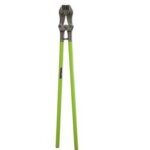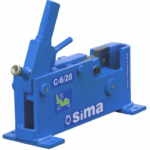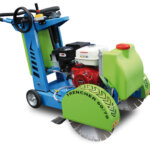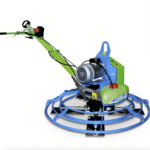An electric rebar cutter is an absolute necessity for anyone who pours concrete foundations, columns, and other structures that require reinforced concrete. A rebar cutter, of course, is a power tool that cuts through the steel rods that are used to reinforce poured concrete. Handheld rebar cutters are a convenient and portable way to make quick, easy cuts through a range of rebar diameters and are widely used by construction and masonry professionals. A rebar cutter is also at home in your personal tool shed, as rebar can be used in a variety of DIY concrete projects, such as poured concrete countertops. This article discusses some important safety precautions to take when operating your handheld rebar cutter, as well as tips for maintaining your rebar cutter so it can stand up to any task at hand.
Contents
Safety when using a handheld rebar cutter
First and most importantly, your rebar cutter should only be used to cut its intended material, and that is graded steel. The diameter allowed will depend on your particular model of rebar cutter. Cutting other materials can damage your rebar cutter and cause injury to you and/or people nearby.
Always wear proper safety gear, including safety glasses or a face shield. Take care when cutting rebar that no ends fly out from the machine, which may happen due to the extremely high pressure applied in order to cut the rebar. In particular, use caution when cutting an end at 12” or less, as these smaller pieces are most likely to shoot out from the machine and injure someone. Good practice is to put a safety screen or barrier between the cutter and bystanders.
Handheld rebar cutter maintenance tips
Before each use, it’s important to inspect your handheld rebar cutter for wear, damage and loose parts. To prevent electric shock, make sure the cord is in good condition, and make sure the handle is dry and not slippery from grease or oil.
Check the rebar cutter for loose screws and bolts, in particular the bolts on the two cutter blocks. Cutting rebar with loose cutter blocks is dangerous and bad for the machine. Also check that the cutter blocks are sharp and in good condition; if either of them is damaged, chipped or dull, remove the bolts and rotate both cutter blocks to reveal two fresh, sharp cutting edges.
Check the oil level and add oil if necessary. If the weather is very cold, warm up the oil for 30 seconds to 1 minute before cutting any rebar.
When using your handheld rebar cutter
Before you cut your rebar, make sure the machine is adjusted to the diameter of the rod you will be cutting. If this parameter is not correctly adjusted, you will wear down your cutter blocks more quickly, may damage the piston, and it is more likely for dangerous fragments to shoot out from the machine while cutting.
Do not operate your rebar cutter on dirt or a soft surface, as this can block the air vents. A sudden drop in power indicates your oil has overheated and you must turn the rebar cutter off and let it cool before starting to cut again. If you ever need to push a cutter block manually, do not do it with your hands; instead, use a spare piece of rebar or other metal bar.





